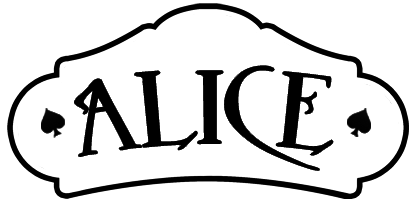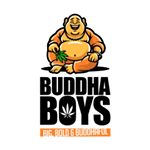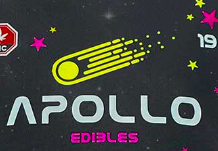News
‘Start low and go slow’: New cannabis products could put party hosts at risk of liability
[ad_1]
The holidays are here, meaning Canadians will be celebrating with family, taking some much deserved time off and gearing up for the new year.
It’s also, coincidentally, when new cannabis products will be trickling onto the market.
Edibles, beverages, vapes and topicals – such as lotions – became legal for sale in Canada on Dec. 17, but they all have different intoxicating effects.
They also have wide ranging levels of potency, depending on whether you’re eating a cookie or vaping.
And if you’re hosting a party you could be at risk of significant legal liability if you’re not careful, so experts have provided some tips to navigate this uncharted territory.
Uncharted territory
While no cases have yet been tested in court, legal experts say they expect cannabis liability to be similar to that of alcohol when it comes to impaired driving or injury in the home.
“The way that it relates to alcohol is that it’s the person who’s hosting the party, it’s their responsibility to make sure that they’re monitoring everyone’s actions at the party,” said Harrison Cooper, an associate lawyer at Ontario personal injury law firm Oatley Vigmond.
“And making sure that their guests aren’t going to do something stupid like get behind the wheel of a car when they’ve had too much to drink.”
Cooper said the same obligation would exist with cannabis, but the issue is that while the use of alcohol is predictable for most people, cannabis use may not be.
If a host were to provide cannabis edibles to guests and someone had a “bad outcome,” Cooper said they could potentially be more liable than if someone brought their own to the party and used them there.
“This adds a whole new layer of complexity,” said Brett Stephenson, a partner at Vancouver-based specialty insurance law firm Dolden Wallace Folick LLP.
“How do you know what has been consumed either before or after someone’s been to your house? And how are these products interacting together? I think that’s the biggest concern.”

Stephenson said the mixing of alcohol and cannabis creates an entirely new area of legal exposure because of the uncertainty around how impaired a user can get when taking both.
Little research has been done on the effects of combining the two substances, but a 2015 study in the journal Clinical Chemistry found users had significantly higher amounts of THC in their blood after using both. THC the main psychoactive ingredient in marijuana.
Last year, a decision came out of the Ontario Court of Appeal that Stephenson said anyone hosting parties over the holidays should be aware of.
An Ontario man was killed in October 2011 after he drank heavily with a friend, walked home, then drove impaired and crashed his car.
The court later found the homeowners could be liable for damages because they breached a duty of care as hosts.
“This found that social host liability can arise even after one’s guest has arrived home safely,” Stephenson said.
“So that’s a major concern that I don’t think most homeowners are aware of.”
‘Start low and go slow’
Robert Gabrys, a research and policy analyst at the Canadian Centre on Substance Abuse and Addiction (CCSA), recommends people start off with low doses when it comes to cannabis.
“Start low and go slow,” he said. “It does affect everybody differently and it’s hard to predict.”
When it comes to THC, Gabrys recommends starting off with about 2.5 mg per product.

Edibles can take quite a bit of time to kick in, up to two to four hours in some cases, but the effects can last much longer – up to 12 hours for psychoactive effects and 24 hours for symptoms such as drowsiness.
“Currently, there aren’t any specific time frames that are recommended for how long you should wait after consuming an edible,” he said.
“One thing we always sort of say is just to clear your schedule for pretty much like an entire day.”
Cannabis beverages have a similar effect, but the onset of symptoms can happen much quicker – in some cases about 30 minutes after drinking.
“If you’re expecting your cannabis beverage to give you the exact same feeling or the exact same onset [as alcohol] and then you keep consuming it expecting it to be like alcohol – the result is not going to be all that fun,” said Abi Roach, the executive chair of NORML Canada and owner of the HotBox Cafe in Toronto.
“You have to educate yourself. Different products have different strength onsets, and different reactions with your body.”

Roach recommends researching brands, potencies and asking questions of suppliers so you don’t put yourself at risk of over-intoxication.
“It’s very, very important that if you’re having a party and you’re serving edibles please find out what the actual onset effect is expected and maybe just put it on a little card by the item that you’re serving,” she said.
The federal government has set strict packaging guidelines for edibles and beverages, with a limit of 10 mg of THC per package.
But that’s considered a low dose for experienced users, and Roach said she is concerned that could mean high sugar content and added calories.
“If you need to dose 100mg, you have to eat 10 units essentially to get one dose,” she said.
Topicals are another type of product where Roach believes there has been a “missed conversation,” largely because they doesn’t necessarily allow THC to enter the bloodstream.
“Topicals work very, very differently. Even if they’re high THC, you’ll never really get ‘high’ from a topical,” she said.
“It’s actually a wellness product. It should be sold over the counter in pharmacies.”
Vaping brings its own concerns
The release of cannabis vaping products comes amid an outbreak of vaping-associated lung illnesses across North America involving cannabis vapes and nicotine e-cigarettes.
As of Dec. 10, 2,409 cases, including 52 deaths, have been reported to the U.S. Centers for Disease Control (CDC) in all 50 states this year.
There have been 14 cases of vaping-associated lung illness reported to the Public Health Agency of Canada as of Dec. 10. Three occurred in British Columbia, two in New Brunswick, four in Ontario, and five in Quebec.

An additive called vitamin E acetate has been blamed for the majority of cases in the U.S., but little is known about the long-term health effects of vaping overall.
Health Canada has said it’s preparing to test the health effects of inhaling substances emitted from cannabis vapes, but did not do so prior to them being legally available.
The products are much more potent than anything else on the market, with a maximum THC amount up to 1,000 mg per package (a gram of dry cannabis has about 100 mg of THC).
The overall message is that we just don’t know, so people have to be careful,” said Gabrys at the CCSA.
“There is a risk that you’re taking by by using these products – they’re not harmless.”
Source link














